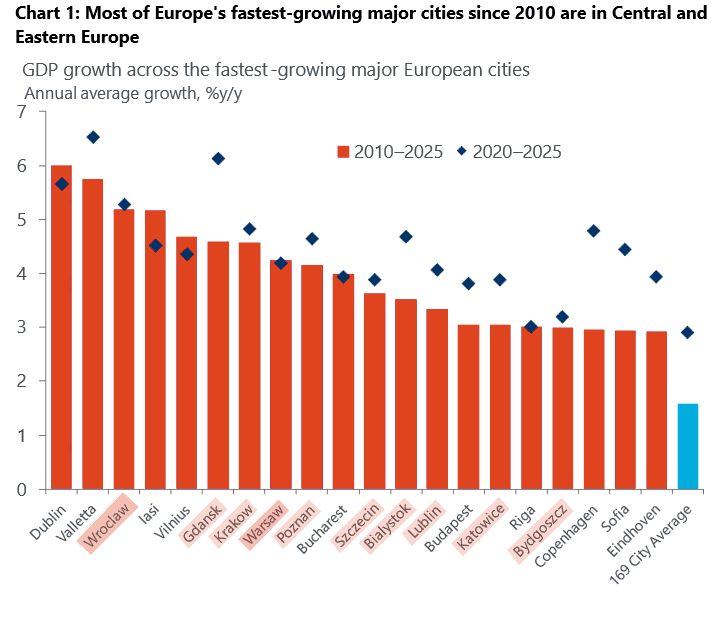London vs Warsaw Property Prices: Complete 2025 Market Comparison
K E Y T A K E A W A Y S
London property prices are currently 160–260% higher than comparable homes in Warsaw, yet Warsaw’s rapidly expanding market delivers significantly larger, higher-spec properties for the same budget.
Typical rental yields of 5–7% in Warsaw versus 3–4% in London mean investors can secure stronger income returns in the Polish capital, while still accessing a major European business hub.
With £250,000, buyers are effectively choosing between a small, often dated studio on the edge of London or a modern three‑bedroom city‑centre apartment or family house in Warsaw’s best districts.
London offers mature-market stability and global prestige, but Warsaw combines lower entry costs, faster price growth, and superior yields, making it a compelling “value play” for investors willing to look beyond traditional UK property strongholds.
The property price gap between London and Warsaw represents one of Europe’s most striking real estate contrasts. While London continues to rank among the world’s most expensive cities for property, Warsaw has emerged as a rapidly growing market, offering significantly more affordable entry points for both investors and homebuyers.
For property investors and potential relocators considering these two vibrant cities today, understanding the price differentials, market dynamics, and investment potential becomes crucial for making informed decisions. The numbers tell a compelling story:
London property prices currently stand approximately 300-400% higher than comparable properties in Warsaw, yet each market offers distinct advantages depending on your investment strategy and budget. Property prices in both cities can have a significant impact on your quality of life, influencing daily living experiences, access to amenities, and the overall lifestyle each town can offer.
This comprehensive analysis examines current market data, investment yields, affordability ratios, and future growth prospects to help you navigate these contrasting property landscapes. Whether you’re seeking a stable investment in an established market or higher yields in a growing economy, this comparison provides the essential insights you need.
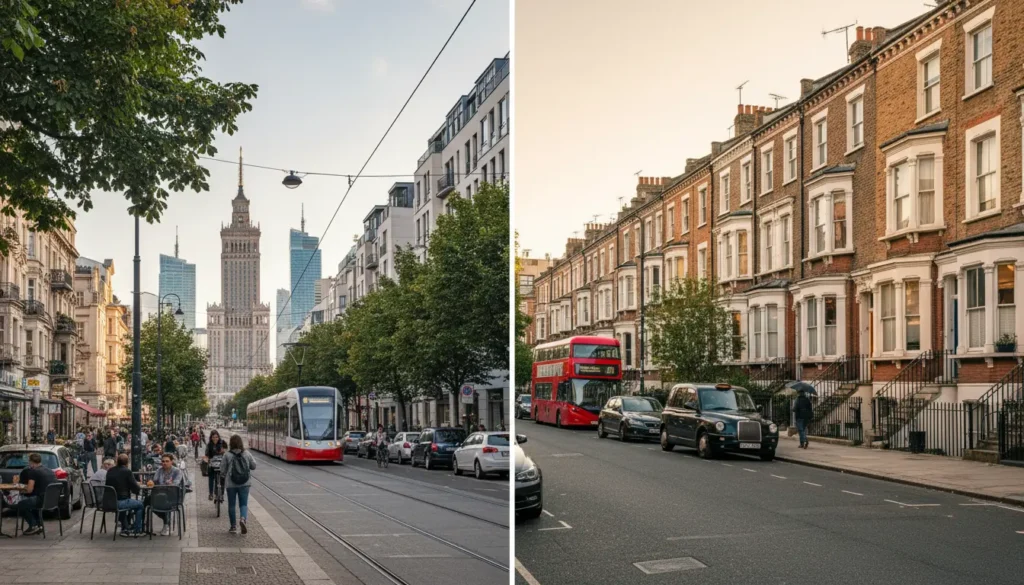
Introduction to Property Markets
The property market is a dynamic landscape that can look dramatically different from one city to another. In today’s world, the cost of living and property prices are among the most important factors influencing where people choose to live and buy a home. For example, cities like London are renowned for their high property prices, making them some of the most expensive places to live not just in Europe, but globally. The cost of a home in London is significantly higher than in many other cities, reflecting its status as a major financial and cultural hub.
In contrast, Warsaw offers a more accessible entry point for buyers and investors. The cost of living in Warsaw is lower, and property prices are much more affordable compared to London. This difference means that buyers can often secure larger or higher-standard properties in Warsaw for the same budget that would only afford a small apartment in London.
Understanding these differences in property markets is crucial for anyone looking to buy, invest, or relocate, as the times and costs associated with purchasing a home can vary significantly between cities. Whether you’re considering London, Warsaw, or another city, being aware of the unique characteristics of each property market will help you make a more informed decision.
What 270 000 euro will get you in Warsaw?
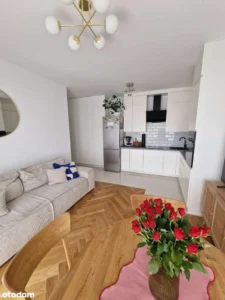
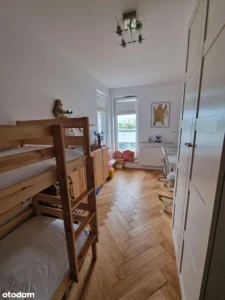

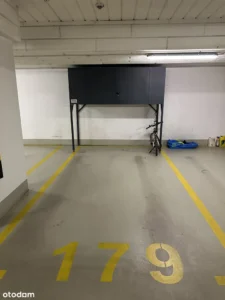


3-Room Apartment | 55 m² | Ready to Move In
Key Features:
- Size: 55 m² (592 sq ft)
- Rooms: 3 rooms
- Floor: 3rd floor of 4
- Condition: Move-in ready
- Heating: District heating (central)
Additional Benefits:
- Balcony/terrace included
- Garage or parking space
- Full ownership (freehold)
Monthly Costs:
- Service charge: 950 PLN (~€220/£190)
Property Type: Resale/secondary market
The fundamental difference between London and Warsaw property markets becomes immediately apparent when examining current price levels and rental yields. When looking at any recent list of European city property prices or cost rankings, London consistently appears at the top, while Warsaw is positioned much lower, highlighting the significant gap between the two markets. London property prices significantly outpace Warsaw across all property types and locations, reflecting its status as a global financial centre versus Warsaw’s position as an emerging European market.
Current Market Snapshot (2025)
Metric | London | Warsaw | Difference |
|---|---|---|---|
Average apartment price | £650,000 | £250,000 (650,000 PLN) | 160% higher in London |
Price per square meter | £8,500-£15,000 | £1,500-£3,500 | 400-500% higher in London |
Rental yields | 2-3% | 3-5% | 2-3% higher in Warsaw |
Annual price growth | 0-3,5% | 3-4% | Warsaw growing faster |
London property prices in the city centre average €10,000-€15,000 per square meter, while central Warsaw properties typically cost €4,000-€5,000 per square meter. This dramatic cost difference means that the same budget that purchases a small studio apartment in outer London zones can secure a spacious three-bedroom apartment in Warsaw’s prime locations.
The rental market reflects similar disparities. A one-bedroom apartment in London city centre commands approximately £2,200 monthly rent, while a comparable property in Warsaw centre costs around £850. However, Warsaw’s higher rental yields of 5-7% versus London’s 3-4% make it particularly attractive for investors seeking regular income returns.
These price differences stem from various factors, including market maturity, international demand, local income levels, and construction costs. London benefits from decades of international investment and limited land availability, driving prices to premium levels. Warsaw, while experiencing rapid growth, remains more accessible due to lower construction costs and emerging market dynamics.
Understanding how prices vary across different property types provides crucial insight for buyers targeting specific accommodation styles. The price gap between London and Warsaw remains substantial across all property categories, though the differential varies depending on location within each city. There are a lot of things buyers can expect in each city, such as studios, one-bedroom flats, and larger family homes, each offering different features and amenities.
Studio Apartments
London studio apartments range from £350,000-£500,000 depending on location, with zones 1-2 commanding premium prices and outer zones offering more affordable options. These compact spaces typically measure 25-35 square meters and often lack separate kitchens or dedicated living areas. Some of these properties may require an update before move-in, especially in older buildings.
Warsaw studios cost £80,000-£120,000 for similar central locations, providing significantly more space and often including separate kitchens and better storage solutions. The quality and standard of finishes in new Warsaw developments frequently match or exceed London standards while maintaining lower prices.
One-Bedroom Properties
Property Type | London Price Range | Warsaw Price Range | Size Difference |
|---|---|---|---|
1-bedroom central | £450,000-£800,000 | £100,000-£180,000 | Warsaw units are 20-30% larger |
1-bedroom outer zones | £300,000-£500,000 | £70,000-£120,000 | Similar size, better amenities |
Two-Bedroom Apartments
London 2-bedroom flats range from £600,000-£1,200,000, depending on location and property condition. Prime central London areas like Kensington or Canary Wharf command the highest prices, while emerging areas like Nine Elms or King’s Cross offer new developments at slightly lower cost per square meter.
Warsaw 2-bedroom apartments cost £120,000-£250,000, typically offering more spacious layouts, better storage, and modern amenities. New developments in Warsaw often include features like underground parking, fitness centres, and concierge services as standard inclusions.
Three-Bedroom Properties and Luxury Market
Three-bedroom properties demonstrate the most dramatic price differences. London requires budgets of £800,000-£2,000,000+ for decent three-bedroom homes, with luxury properties in Mayfair, Belgravia, or prime developments exceeding £3,000,000.
warsaw three-bedroom apartments cost £180,000-£400,000, with luxury penthouses reaching £400,000-£800,000. These luxury properties often feature high-end finishes, panoramic city views, and extensive balconies or terraces rarely found at comparable price points in London.
London vs Warsaw: Salaries, Crime, Air Quality, Transport and Healthcare Compared
When comparing London vs Warsaw quality of life, the contrast goes well beyond property prices.
According to 2025 data from Numbeo, the average net monthly salary is around £3,560 in London and £1,590 in Warsaw, giving London workers over 120% higher income on paper, but in a city where housing costs are three to four times higher and local purchasing power is only about 20% stronger.
On crime rate and safety, Warsaw performs significantly better: London shows a Crime Index of roughly 55–56 versus about 25 for Warsaw, with residents rating Warsaw as “highly safe” for walking alone even at night, compared with only moderate safety scores in London.
In terms of air quality, London has a clear advantage: World Health Organisation figures compiled by Numbeo show PM2.5 levels around 12 µg/m³ in London vs. 25 µg/m³ in Warsaw, meaning cleaner air despite similar overall pollution indices.
Public transport and healthcare are strong in both capitals but differ in character: London offers a much larger, globally connected network with longer average commute times (Traffic Commute Time Index ~44.8 vs. 34.8 in Warsaw) and far higher fares, while its
Health Care Index of about 69.6 outperforms Warsaw’s 58.3, reflecting better perceived quality and responsiveness in the UK’s NHS compared with Poland’s public system
What We Offer at Varso Invest
Exclusive Property Portfolio Access
Gain entry to a carefully selected and diverse range of property opportunities, including off-market deals rarely available to the public. Whether you’re looking for residential, commercial, or mixed-use investments, we provide options tailored to different goals and budgets.Hands-Free Portfolio Building
Sit back while we manage every step—sourcing, researching, and securing properties for you. From initial search to final handover, our team takes care of all details, ensuring you can build a successful property portfolio without the stress or time commitment.Professional Price Negotiation
We negotiate directly with sellers and agents on your behalf. Our expert negotiators focus on getting you the best possible price and terms, maximizing your investment returns and protecting your interests at every stage of the transaction.Independent Property Valuation
Rest assured that every property is thoroughly assessed for value and potential. We arrange independent valuations by trusted professionals, so you know you’re making well-informed decisions based on unbiased market data.Continuous Support & Advice
Enjoy ongoing guidance, market insights, and regular updates as your property portfolio grows. We’re always available to answer questions and adjust your strategy as the market changes or your priorities evolve.
Ready to explore your options? Get in touch for a free,
no-obligation consultation.
Email:
hello@varsoinvest.com
Office United Kingdom:
+44 1223 903018
WhatsApp:


In the suburbs of Warsaw, a four-bedroom house can be purchased for £250,000-£400,000, often situated on a large lot that provides ample outdoor space for families. The quality differential between properties at similar price points favours Warsaw significantly. A £400,000 budget in Warsaw secures a luxury apartment with premium finishes, while the same amount in London might purchase a dated two-bedroom flat requiring renovation.
What £250,000 Buys You in Each City
The £250,000 budget threshold provides an excellent case study for understanding real purchasing power differences between these markets. This amount represents a substantial investment that yields dramatically different results depending on your chosen city.
London Options at £250,000
In london, £250,000 typically secures:
Studio apartment in Zone 3-4: A 25-30 square meter studio in areas like Walthamstow, Croydon, or Woolwich. These properties often require renovation and may lack modern amenities.
Shared ownership property: 25-40% share in a one-bedroom apartment closer to central zones, with ongoing rent payments on the remaining portion.
Leasehold concerns: Most properties at this price point come with short leases (under 80 years), requiring expensive lease extensions.
Warsaw Options at £250,000
The same budget in warsaw provides:
Three-bedroom city center apartment: 80-100 square meter apartment in prime districts like Śródmieście or Mokotów, featuring modern finishes and amenities.
Four-bedroom suburban house: Spacious family home in desirable areas like Konstancin-Jeziorna or Piaseczno, often with gardens and parking.
Luxury two-bedroom with amenities: High-end apartment in new developments with concierge, fitness facilities, and premium finishes.
Specific Property Examples
A recent example in london’s Zone 3 showed a 28 square meter studio apartment in Stratford for £245,000, requiring significant renovation and offering no balcony or storage space. The annual service charge and ground rent added £2,400 to ownership costs.
In contrast, a 90 square meter three-bedroom apartment in warsaw’s Mokotów district recently sold for £240,000. The property featured modern finishes, a balcony, underground parking, and access to building amenities including a fitness room and children’s playground.
The quality and standard differences extend beyond size alone. Warsaw properties at this price point typically include:
Central air conditioning systems
High-quality kitchen appliances
Fitted wardrobes and storage solutions
Balconies or terraces
Allocated parking spaces
Building security systems
London properties at similar prices often lack these features, with buyers facing additional costs for basic amenities that come standard in Warsaw developments.
Market Trends and Growth Patterns
Historical price movements and growth patterns reveal important insights about market maturity and future potential in both cities. While London represents an established, slower-growing market, Warsaw demonstrates emerging market dynamics with higher volatility and growth rates.
London Market Trends
London’s annual price growth has averaged 2-5% over the past decade, with periods of higher growth followed by corrections. The market showed resilience during economic uncertainty, supported by international demand and limited housing supply.
Key factors influencing London trends:
Brexit initially caused uncertainty, followed by market stabilisation
International buyer restrictions slightly reduced premium market demand
COVID-19 prompted temporary price adjustments, particularly in central London
The current market shows a modest recovery with selective growth in emerging areas
Warsaw Market Evolution
Warsaw has experienced remarkable growth, with annual price increases of 8-12% in recent years. The city recorded some of Europe’s fastest property price growth in 2024, with certain quarters showing annual increases exceeding 20%.
Growth drivers include:
Continued economic expansion and foreign direct investment
EU membership benefits attract international businesses
Return migration of Polish expats from Western Europe
Limited new construction relative to demand
Growing technology and financial services sectors
Post-Pandemic Shifts
The pandemic accelerated several trends affecting both markets. Remote work capabilities increased demand for larger properties with home office space. London saw temporary price declines in small central apartments as workers relocated to suburban areas.
Warsaw benefited from increased domestic demand and continued international investment. The city’s growing reputation as a tech hub attracted companies relocating from more expensive Western European locations, supporting sustained price growth.
Exchange Rate Considerations
Currency fluctuations add complexity for international investors. The British pound’s volatility against the Euro and Polish zloty can significantly impact returns. Recent years have shown the pound weakening against the zloty, making London properties more accessible to Polish buyers while reducing returns for UK investors in Warsaw.
Investment Potential Analysis
Evaluating investment potential requires examining both rental yields and capital appreciation prospects across different time horizons. The fundamental trade-off between London’s stability and Warsaw’s growth potential defines investment decisions for many buyers.
Rental Yield Analysis
Warsaw consistently delivers superior rental yields of 5-7% compared to London’s 3-4%. This difference stems from lower purchase prices relative to rental income rather than higher absolute rents. Warsaw’s growing expat community and limited rental supply support strong rental demand.
London’s lower yields reflect high purchase prices relative to rental income. However, the market offers greater liquidity and established tenant demand from international students, professionals, and temporary residents.
Capital Appreciation Potential
Time Horizon | London Prospects | Warsaw Prospects |
|---|---|---|
1-3 years | Modest growth 2-4% | Strong growth 8-15% |
5-10 years | Steady appreciation | Significant potential |
10+ years | Established market stability | Convergence with Western Europe |
London’s established market status suggests continued modest appreciation supported by international demand and supply constraints. Major infrastructure projects like Crossrail and ongoing regeneration provide selective growth opportunities.
Warsaw’s convergence potential with Western European cities presents compelling long-term prospects. As Poland’s economy matures and living standards rise, property prices may continue approaching Western European levels while maintaining yield advantages.
Risk Assessment
London investment risks include:
Policy changes affecting international buyers
Brexit-related economic uncertainty
High entry costs limit the buyer pool
Interest rate sensitivity due to high leverage levels
Warsaw investment risks encompass:
Currency volatility affecting international returns
Rapid price growth potentially outpacing income growth
Less mature legal and regulatory frameworks
Economic sensitivity to broader European conditions
International Investor Considerations
Both markets attract international buyers, but for different reasons. London appeals to investors seeking asset security, global liquidity, and diversification. Warsaw attracts those pursuing higher yields and growth potential in an emerging market context.
Currency hedging becomes important for international investors, particularly given the volatility between sterling, euros, and zloty. Some investors choose to maintain financing in the same currency as their property purchase to reduce exchange rate risk.
Affordability and Income Ratios
The relationship between property prices and local incomes reveals important insights about market accessibility and sustainability. Both cities present affordability challenges, but the nature and severity differ significantly based on local economic conditions.
Income and Salary Comparison
Metric | London | Warsaw |
|---|---|---|
Average salary | £45,000 | £18,000 (75,000 PLN) |
Median property price | £650,000 | £160,000 |
Price-to-income ratio | 15:1 | 8:1 |
Required income for the average property | £65,000+ | £20,000+ |
London’s higher salaries partially offset property prices, but the price-to-income ratio of 15:1 represents a significant affordability challenge. Even professionals earning above-average salaries struggle to access property ownership without family assistance or shared ownership schemes.
Warsaw’s 8:1 ratio appears more manageable, though rapid price growth outpaces salary increases. Young professionals and families can more readily access property ownership, particularly with mortgage financing available at competitive rates despite recent increases.
First-Time Buyer Challenges
London first-time buyers typically require deposits of £65,000-£130,000 (10-20% of purchase price), representing 1.5-3 times annual average salaries. Many buyers rely on family assistance, inheritance, or years of savings while renting expensive properties.
Warsaw first-time buyers need deposits of £16,000-£32,000, representing roughly one year’s salary for average earners. This more accessible entry point enables younger buyers to enter property ownership earlier in their careers.
Mortgage Availability and Terms
UK mortgage lending offers competitive rates around 5% for typical borrowers, with loan-to-value ratios up to 90% for qualified applicants. Strict affordability assessments and stress testing requirements limit borrowing capacity relative to income.
Polish mortgage rates currently average 7.6% for typical products, reflecting higher base rates and risk premiums. However, lending criteria remain accessible for qualified borrowers, and many banks offer products specifically designed for young buyers.
Regional Income Variations
Both cities show significant income variations by district and profession. London’s financial services, technology, and legal sectors offer salaries substantially above the city average, enabling access to premium properties.
Warsaw’s growing technology sector, international companies, and financial services provide increasingly high-salary opportunities. These roles often offer compensation packages competitive with Western European positions while benefiting from lower living costs.
Long-term Sustainability Concerns
Rapid price growth in both cities raises sustainability questions. London’s market maturity suggests prices may moderate as affordability constraints limit buyer pools. Warsaw’s emergence may continue driving prices higher until reaching equilibrium with regional income levels.
Policy interventions in both markets aim to address affordability. UK initiatives include shared ownership, Help to Buy schemes, and first-time buyer incentives. Poland implements various programs supporting young buyers and families entering property ownership.
Factors Influencing Property Prices
Property prices are shaped by a range of factors, with location being one of the most significant. The cost of land in a city’s most popular areas can drive prices up, especially in places where space is limited or demand is high. For example, in cities like Porto, Portugal, the popularity of the location among tourists and expats has led to higher land and property prices. The standard of living in a city also plays a key role—areas with better amenities, infrastructure, and lifestyle options tend to command higher prices.
Tax and other expenses associated with buying and maintaining a property can further impact the overall cost. Buyers need to consider not just the purchase price, but also ongoing costs such as property taxes, maintenance fees, and local levies, which can vary widely between cities and countries. It’s essential to regularly check current prices and market trends, as the property market is constantly updating and prices can change over time. Staying informed about these factors will help buyers and investors make smarter decisions and adapt to shifts in the market, whether they’re looking at properties in London, Warsaw, Portugal, or beyond.
Regional Comparison
Comparing property markets across different regions highlights just how much prices and affordability can vary. For instance, Portugal has become a popular destination for holiday home buyers, with a wide selection of properties for sale in cities like Porto and Lisbon. The property market in Greece also offers diverse options, with prices that depend heavily on the location and type of property. These regional differences are shaped by factors such as local demand, economic conditions, and the overall cost of living.
When looking at cities like London and Warsaw, the contrast becomes even more pronounced. The cost of living in London is significantly higher than in Warsaw, making it much more challenging for buyers to afford a home in the British capital. In Warsaw, buyers can often find properties for sale at a fraction of London prices, allowing for a higher standard of living at a lower cost. This regional comparison is essential for anyone considering where to buy or invest, as it provides a clearer picture of what your budget can achieve in different markets. Whether you’re drawn to the popular cities of Portugal, the affordability of Warsaw, or the prestige of London, understanding these regional differences will help you make the best choice for your property goals.
Additional Costs and Considerations
Property purchase decisions require careful evaluation of all associated costs beyond the headline purchase price. Both London and Warsaw involve significant additional expenses, but the types, amounts, and timing vary considerably between the jurisdictions.
Transaction Costs
UK property purchases incur stamp duty land tax ranging from 0-12% depending on purchase price and buyer status. First-time buyers receive exemptions up to £425,000, while additional properties face supplementary charges of 3%.
For a £500,000 London property:
Stamp duty: £15,000 (standard rate buyers)
Legal fees: £1,500-£3,000
Survey costs: £500-£1,500
Total transaction costs: £17,000-£19,500
Polish property purchases involve notary fees, registration costs, and tax obligations. The PCC tax (civil law transactions tax) applies at 2% of the property value for residential properties.
For a £200,000 (850,000 PLN) Warsaw property:
PCC tax: £4,000 (17,000 PLN)
Notary fees: £1,000-£1,500 (4,000-6,500 PLN)
Registration costs: £200 (850 PLN)
Total transaction costs: £5,200-£5,700
Ongoing Property Costs
London property ownership involves:
Council tax: £1,000-£3,000+ annually, depending on property value and location
Service charges: £1,000-£5,000+ annually for apartments
Ground rent: £200-£500+ annually for leasehold properties
Insurance: £200-£800 annually
Maintenance and repairs: 1-2% of property value annuallyWarsaww property ownership costs include:
Property tax: £100-£500 annually (significantly lower than the UK)
Building management fees: £500-£1,500 annually for apartments
Utilities: £800-£1,200 annually (heating, water, electricity)
Insurance: £150-£400 annually
Maintenance: £300-£800 annually

Legal Requirements for Foreign Buyers
UK property purchase involves straightforward legal processes for most international buyers. EU nationals retain buying rights post-Brexit, while non-EU buyers face few restrictions on residential property purchases.
Required documentation includes:
Proof of identity and address
Source of funds verification
Anti-money laundering checks
Mortgage approval (if applicable)
Polish property purchases by EU nationals require minimal additional documentation. Non-EU buyers may need permits for certain property types or locations, particularly agricultural land or properties near borders.
Insurance and Legal Protection
UK property insurance typically covers buildings and contents, with premiums varying by location, property type, and coverage levels. Leasehold properties often include building insurance within service charges.
Polish property insurance covers similar risks at generally lower premium costs. New developments often include comprehensive insurance packages, while older properties may require individual aarrangements
Professional Service Requirements
Both markets require professional legal representation, though the processes differ. UK conveyancing solicitors handle property transfers, searches, and legal compliance. Costs vary by complexity and location, with London transactions typically commanding higher fees.
Polish notaries fulfil similar functions with standardised fee structures. Additional legal support may be beneficial for international buyers unfamiliar with local procedures and documentation requirements.
Tax Implications
Property ownership tax implications vary significantly between jurisdictions and buyer circumstances. UK residents face capital gains tax on investment properties, while non-residents may have different obligations.
Polish tax obligations depend on residency status and property use. Rental income faces standard income tax rates, while capital gains receive preferential treatment for long-term holdings.
Both jurisdictions offer various exemptions and reliefs, making professional tax advice valuable for property investors planning their purchase and ownership strategies.
The stark contrast between London vs Warsaw property prices reflects the fundamental differences between an established global financial centre and a rapidly emerging European market. With London properties costing 300-400% more than comparable Warsaw properties, each market serves different investor profiles and objectives.
London offers stability, international prestige, and proven long-term value retention, making it ideal for investors prioritising security and diversification. However, high entry costs, lower yields of 3-4%, and significant affordability challenges limit accessibility for many buyers.
Warsaw presents exceptional value propositions with higher rental yields of 5-7%, rapid capital appreciation potential, and substantially lower entry costs. The city’s emergence as a major European business hub supports continued growth prospects, though investors must consider currency risks and market volatility.
For investors with £250,000 budgets, the choice becomes particularly clear: a small studio requiring renovation in London versus a spacious three-bedroom apartment in Warsaw’s city centre. The quality, space, and amenities available in Warsaw at this price point significantly exceed London’s offerings.
Market trends suggest Warsaw will continue converging toward Western European price levels while maintaining yield advantages for the foreseeable future. London’s mature market status indicates more modest growth but greater stability and liquidity.
Your property investment decision should align with your risk tolerance, yield requirements, and long-term objectives. Consider consulting with property professionals familiar with both markets to navigate the legal, financial, and practical aspects of international property investment. Whether seeking the stability of an established market or the growth potential of an emerging one, both London and Warsaw offer compelling opportunities for informed investors.




